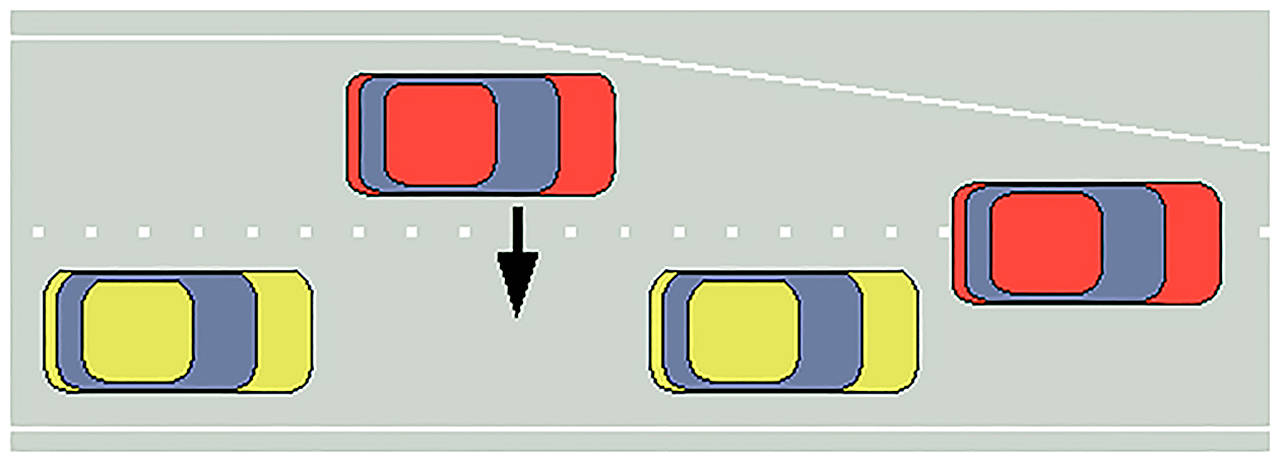Some state lawmakers have a possible low-cost, high-reward bill to solve a small part of a persistent traffic problem: Proper zipper merging.
House Bill 1231 would require drivers education courses to teach the zipper merge maneuver and its associated road rules. It also would add a question about the move to the drivers license written exam, and information about the technique would be given to drivers when they renew their licenses.
Teaching drivers how to merge properly is about safety, said Rep. Jesse Young, a Republican from Gig Harbor.
“There are often times unsafe merging scenarios occur on our roadways,” the bill’s main sponsor said. “One of the things you definitely want to avoid is standing traffic on a highway.”
For those unfamiliar with a zipper merge (based on how I’ve seen people do it wrong, there are dozens of you), it is the technique when an on-ramp joins a roadway but does not have its own dedicated lane for long. The idea is that drivers joining the roadway, often a highway, should get up to speed and merge at the same mph as flowing traffic.
But that doesn’t always happen, and one cause can be people don’t know how to alternate their ingress to traffic with drivers already in the flow.
Rep. Shelley Kloba, a Democrat from Kirkland, co-sponsored the bill. She said an old insurance commercial exemplified the Pacific Northwest driving culture — which the zipper merge’s education is an attempt at partially improving — when it showed two drivers come to a four-way stop. Each motioned for the other to go, then lurched forward, only to ask the other to go: “You go. No, you go. No, you go.”
The zipper merge runs into problems when people don’t use the full length of the merging lane, drivers don’t let those from that lane in, or don’t alternate properly.
“It only works if everybody does it (right),” Kloba said.
Some of the problems could stem from childhood lessons about proper queue etiquette.
“There’s a general notion in our society that it’s rude to cut,” Young said.
Adding the question to the drivers license test is estimated to cost $7,000, according to the bill’s fiscal analysis. Including it in the written portion instead of the practical exam was a matter of equity, Kloba said. Some parts of the state don’t have on-ramps that require zipper merging.
“I can recall being a kid who learned how to drive and took my test in a very small town, where there was no such thing,” she said.
The bill received a 29-0 vote to move on from the House Transportation Committee on Friday. One of those yea votes came from Rep. Emily Wicks, a Democrat from Everett. She supported the bill because it promotes “safety and respect for other drivers” and can help reduce congestion.
“This merging issue has been an area of contention for me and my family,” she continued, “especially as we are getting off our exit on I-5 we see the interaction between folks coming from (U.S.) 2 trying to merge into traffic. If this was a more well-known maneuver, I think that area of severe bottleneck could be drastically improved for all and much safer.”
Kloba and Young didn’t think it would add significant duration to drivers education courses. Young said several states’ transportation departments, including Washington’s, made videos about it that can be shown or adapted into lessons. Most are shorter than two minutes.
Another benefit in the bill’s favor: it does not create an infraction for law enforcement to cite, Young said.
He hopes it will receive a vote in the next few weeks.
Have a question? Call 425-339-3037 or email streetsmarts@heraldnet.com. Please include your first and last name and city of residence.


